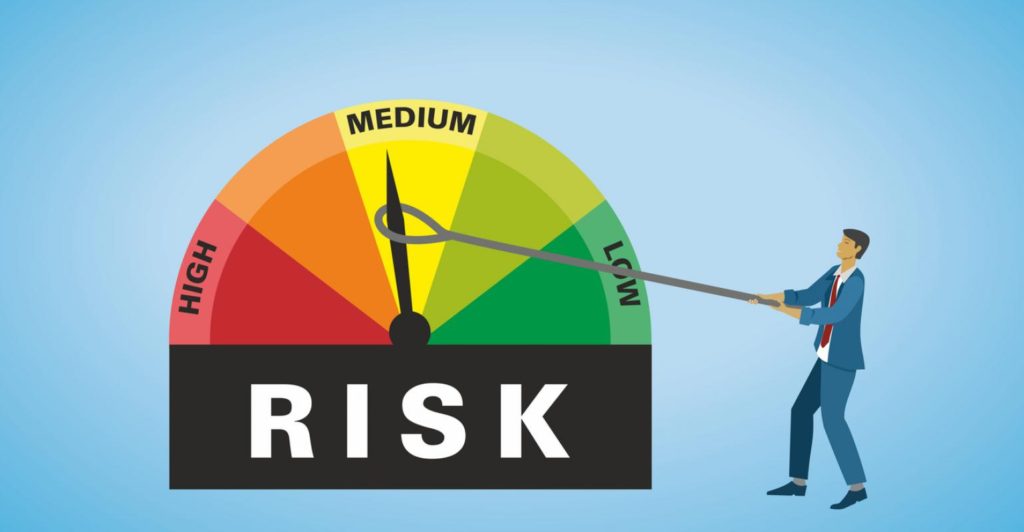Risk management in trading

Risk management in trading refers to the process of identifying, assessing, and mitigating potential risks associated with financial transactions and investments. In the context of trading, risk management is crucial to protect capital and ensure the longevity of a trader’s career.
The primary goal of risk management in trading is to control and limit potential losses while maximizing potential gains. It involves developing and implementing strategies to manage various types of risks, such as market risk, credit risk, liquidity risk, and operational risk.
Market risk refers to the risk of financial losses due to fluctuations in market prices. Traders use various risk management techniques, such as setting stop-loss orders and position sizing, to protect against adverse price movements.
Credit risk involves the risk of counterparty defaulting on their obligations, leading to potential losses for the trader. Proper risk management includes conducting due diligence on counterparties and diversifying trading partners to mitigate credit risk.
Liquidity risk is the risk of not being able to exit a position at a favorable price due to insufficient trading volume. Traders manage liquidity risk by trading in liquid markets and avoiding illiquid assets.
Operational risk encompasses risks arising from internal processes, systems, and human errors. Implementing robust trading systems, maintaining backups, and adhering to best practices help manage operational risk.
Risk management in trading also involves setting risk tolerance levels and adhering to a well-defined trading plan. Traders should avoid emotional decision-making and stick to their risk management rules to ensure consistency and discipline in their trading approach.
Overall, risk management in trading is an essential aspect of successful trading. By proactively identifying and mitigating risks, traders can protect their capital, minimize losses, and increase the likelihood of achieving profitable returns over the long term.
Risk management in trading is a critical aspect that ensures traders safeguard their capital and navigate the unpredictable market terrain. Technical indicators play a crucial role in assessing and managing potential risks associated with trading decisions. While these indicators offer valuable insights, they are not infallible and can generate false signals. Therefore, implementing a comprehensive risk management strategy is vital to success in the trading world.
- Confirmation: A key element in risk management is relying on multiple technical indicators to confirm signals. Avoid making trading decisions solely based on one indicator. When multiple indicators align, it enhances the likelihood of accurate signals, providing a solid foundation for informed trades.
- Stop Loss Orders: Limiting potential losses is imperative for successful risk management. By setting stop loss orders, traders can predetermine the level at which a trade will be closed to prevent excessive losses. Technical indicators can help identify suitable stop levels based on support and resistance or market volatility.
- Position Sizing: Using appropriate position sizing is essential to control the amount of capital risked on each trade. Overexposure to a single trade can lead to significant losses, so prudent position sizing is a crucial component of risk management.
- Backtesting: Thoroughly testing new technical indicators through backtesting on historical data is a vital step before implementing them in live trading. This helps traders assess the indicator’s performance, strengths, and weaknesses under various market conditions.
- Volatility Assessment: Considering market volatility when interpreting technical indicators is crucial. High volatility can result in false signals, leading to erroneous trading decisions. Adjusting risk parameters in line with market volatility enhances risk management effectiveness.
- Diversification: Spreading risk by diversifying the trading portfolio is a smart risk management strategy. Overconcentration in a single asset or market exposes traders to undue risk. Diversification helps mitigate the impact of adverse market movements.
- Emotional Discipline: Maintaining emotional discipline is paramount for successful risk management. Avoid making impulsive decisions solely based on technical indicator signals. Sticking to a well-defined trading plan helps traders avoid emotional pitfalls.
- Adaptability: Markets are dynamic, and indicators may lose effectiveness over time. Successful risk management involves adapting strategies to changing market conditions and being open to exploring alternative indicators.
Conclusion: In trading, no technical indicator is infallible, and losses are an inherent part of the journey. Effective risk management aims to protect capital and ensure long-term success. By combining technical analysis with sound risk management practices, traders can enhance their trading performance and achieve more consistent results. Embracing a comprehensive risk management approach will empower traders to navigate uncertainty with confidence, making their trading journey a successful and rewarding one.
1 thought on “Risk management in trading”
Comments are closed.